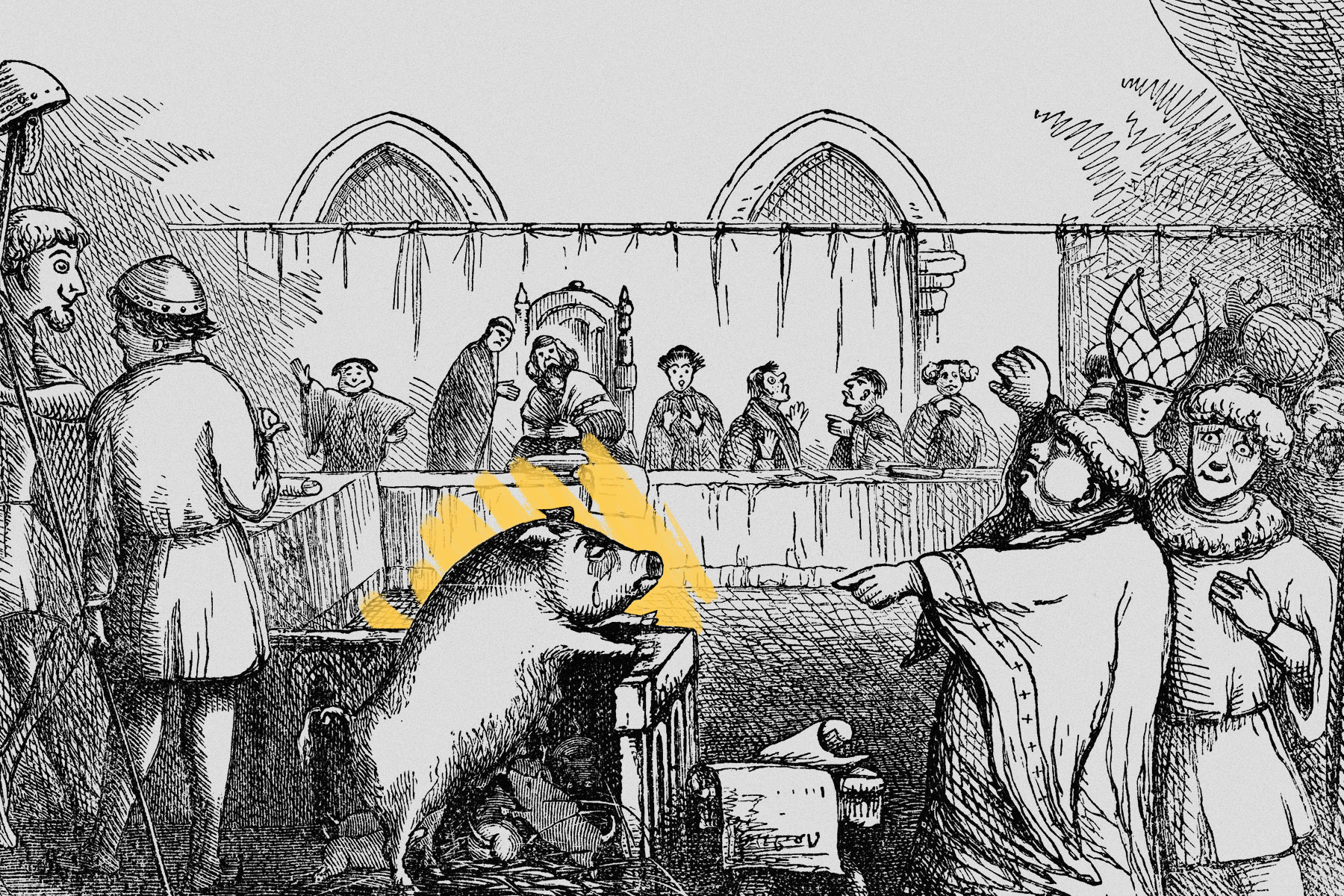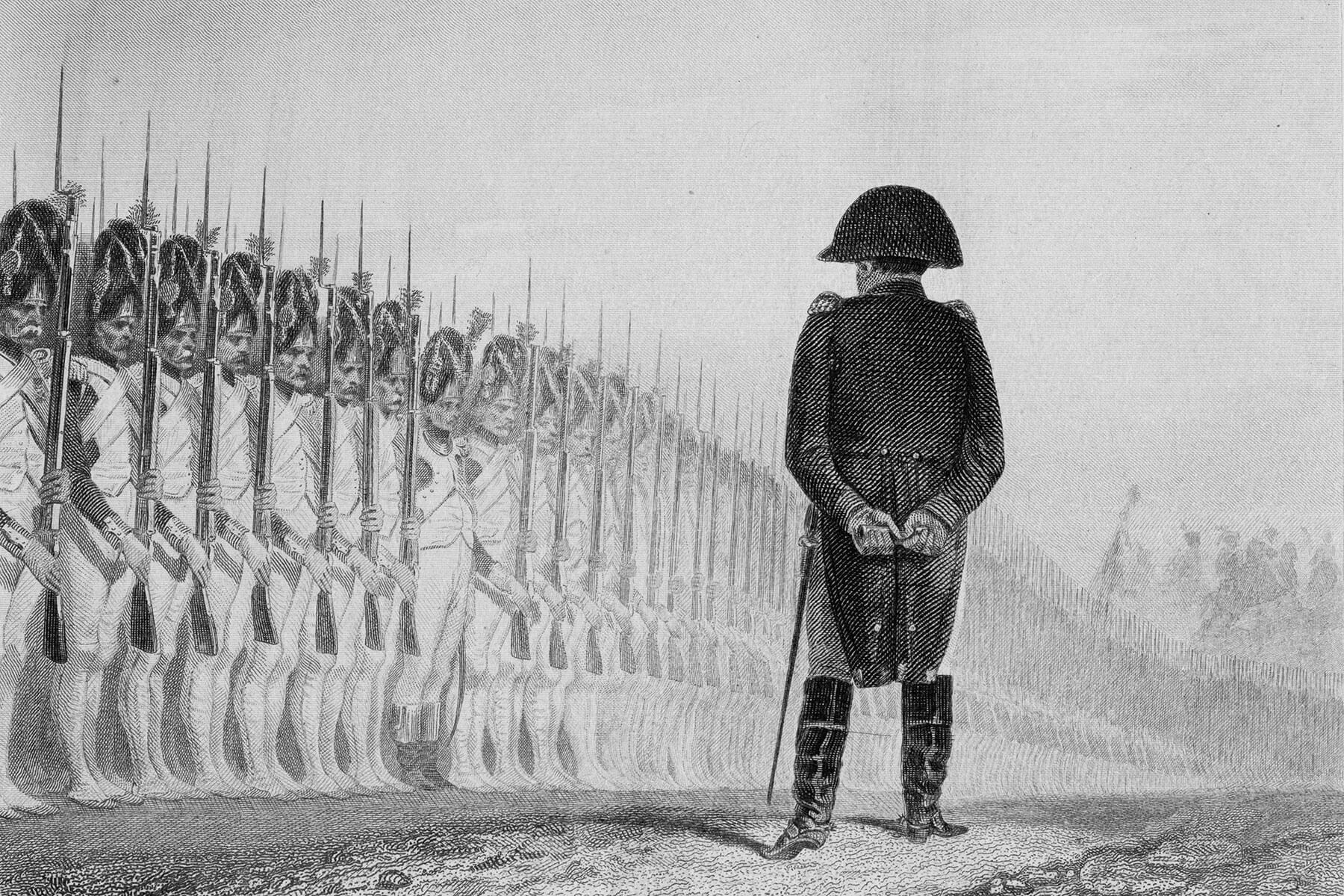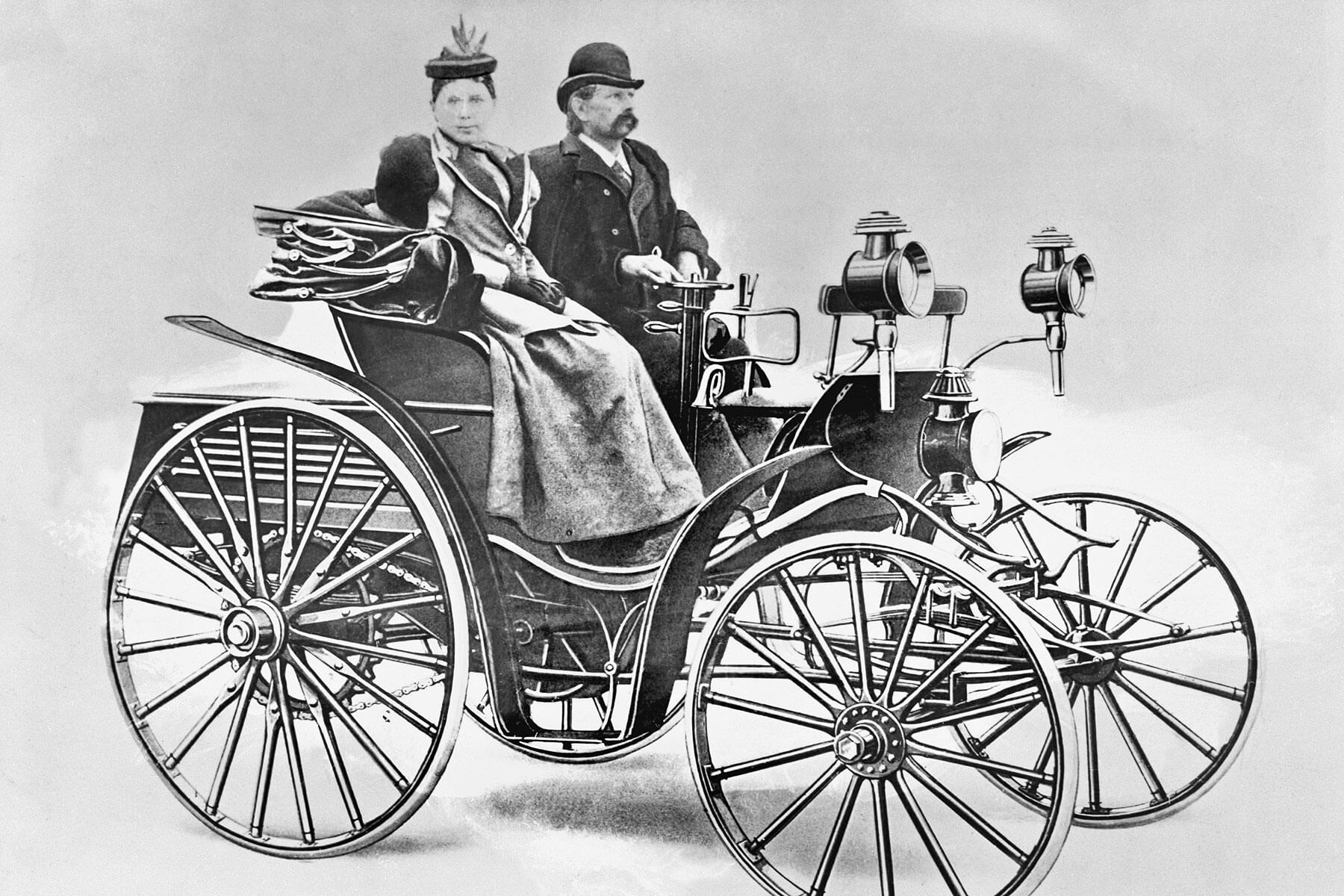In Europe during the Middle Ages, crime and punishment were often theatrical, with crowds gathering to witness executions and public humiliations. |
| |
| |
|
 |
|
| I n Europe during the Middle Ages, crime and punishment were often theatrical, with crowds gathering to witness executions and public humiliations. But what they witnessed wasn't always a human trial — often, medieval courts meted out justice on animals. France kept the most extensive records of these trials, but they were also held in Switzerland, Germany, and occasionally Italy and Spain. There were two main types of medieval animal trials: secular trials, usually against one animal or a small group of animals, and religious proceedings on a group of pests, such as mice or locusts. The idea of animals on trial may seem whimsical now, but these were deadly serious affairs, with the same judges, executioners, and expenses of a human trial. |
|
|
| A surprisingly large number of the single-animal trials were pigs that had committed violence against human children. In one 1457 case in Savigny, France, a sow was accused of killing a 5-year-old child with her own six piglets tagging along. Her owner was accused only of negligence, but the pig was sentenced to death. Because the court could not prove their involvement, the piglets were spared. As for the mass trials in ecclesiastical courts, the local bishop (or someone from his staff) would typically appoint a human proxy for the accused pests. This person would have the impossible task of telling the accused to show up for their court date. In one case, a group of flies failed to appear and the court took pity on them for their small size and young age and assigned them different counsel. As part of the proceedings, a judge would hold one member of the species and tell it to leave. If it left, the community would give thankful prayers. If it stayed, the judge would excommunicate the pests from the church, and start organizing people to help rid them from the area. |
|
 |  |
|
| Thank you for supporting our advertisers! |
|
| |
|
 |
|
By the Numbers |
|
| Cost (in Parisian livre) of one sow's trial and execution | | | 3.5 |
| | | Pig population in France as of December 2022 | | | 12 million |
| | | Pig population in France as of December 2022 | | | 12 million |
|
|
|
| Approximate length (in years) of the Middle Ages (500-1500 CE) | | | 1,000 |
| | | Typical number of jurors in a modern criminal trial | | | 12 |
| | | Typical number of jurors in a modern criminal trial | | | 12 |
|
|
|
 |
|
 | | Did you know? |
|
|
A Norman church had a pig execution mural. |
|
| One of the better-known cases of porcine capital punishment was in the Norman town of Falaise, located in modern-day northwestern France. In the 14th century, a local tribunal found a sow guilty of killing a 3-month-old child and condemned it to be mutilated and hung to death. The sentence was carried out in the public square with the pig dressed in human garments, a scene that was immortalized in a fresco on the west wall of Falaise's Church of the Holy Trinity. The tableau may have inspired a fictional mural mentioned in Geoffrey Chaucer's The Knight's Tale. The real-life art was whitewashed over in about 1820, and only written accounts of the painting survive — although there's a sketch of the scene in the 1872 French text L'homme et la Bête (The Man and the Beast). |
|
| Thank you for supporting our advertisers! |
|
| |

















0 comments:
Post a Comment